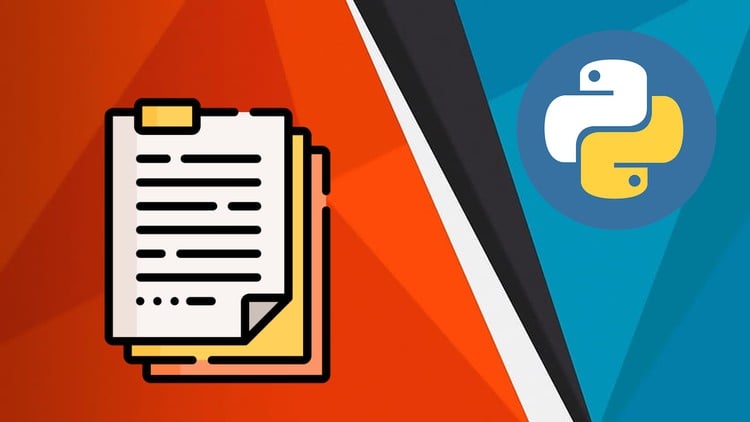
A Comprehensive Guide to Writing Elegant Python Code, Following PEP 8, and Unleashing Your Programming Potential
⏱️ Length: 4.1 total hours
⭐ 4.40/5 rating
👥 9,357 students
🔄 October 2023 update
Add-On Information:
Note➛ Make sure your 𝐔𝐝𝐞𝐦𝐲 cart has only this course you're going to enroll it now, Remove all other courses from the 𝐔𝐝𝐞𝐦𝐲 cart before Enrolling!
-
Course Overview
- This course transcends basic Python syntax, delving into the critical discipline of writing Python code that is not just functional, but also elegant, maintainable, and highly readable. It serves as a bridge for developers looking to elevate their coding practices from personal projects to professional-grade contributions.
- Explore the fundamental philosophy behind Python’s community-driven code style guidelines, PEP 8, understanding its profound impact on project longevity, team collaboration, and overall software quality.
- Cultivate a strategic mindset for structuring code, ensuring that your programs are not only efficient in execution but also comprehensible and easily extensible for future modifications or team handoffs.
- Uncover how consistent code styling dramatically reduces cognitive load during development and debugging, leading to more robust and less error-prone applications, regardless of project scale.
- Prepare yourself for advanced Python development by mastering the tenets of clean code, which is foundational for understanding and implementing complex design patterns and architectural principles with clarity.
- Gain insights into how adherence to a unified style guide fosters a professional development environment, making your contributions more valued and your integration into existing codebases seamless.
- This comprehensive guide ensures you grasp the ‘why’ behind best practices, empowering you to make informed stylistic choices that enhance both immediate project goals and long-term maintainability.
-
Requirements / Prerequisites
- Learners should possess a foundational understanding of Python programming concepts, including variables, data types, control flow statements (if/else, loops), and basic function definitions.
- Familiarity with the concept of modules and how to import them in Python would be beneficial for understanding structured project layouts.
- A working Python development environment (e.g., Python interpreter installed, a text editor or IDE like VS Code, PyCharm) is necessary for hands-on practice.
- An eagerness to refine existing coding habits and an open mind to embracing industry-standard conventions are key for maximizing learning outcomes.
- Basic exposure to object-oriented programming (classes, objects) in Python will aid in grasping advanced naming conventions and organizational principles for complex structures.
- No prior experience with PEP 8 specifically is required, as the course will cover it comprehensively from its core principles.
-
Skills Covered / Tools Used
- Mastering the art of writing highly readable and self-documenting Python code, significantly reducing the need for excessive comments.
- Proficiency in refactoring existing Python codebases to align with modern best practices, improving their clarity and performance.
- Developing a keen eye for identifying and rectifying stylistic inconsistencies, preparing you for code review processes in professional settings.
- Skills in leveraging modern Integrated Development Environments (IDEs) and text editors to automatically apply and check code style during development.
- Understanding the practical application of various static code analysis tools (e.g., linters and formatters like Black, Flake8, or Pylint conceptually) to enforce stylistic consistency.
- Techniques for organizing larger Python projects into logical packages and modules, facilitating easier navigation and independent component development.
- Implementing effective version control strategies where code style consistency ensures cleaner diffs and more understandable commit histories.
- Acquiring the discernment to balance strict PEP 8 adherence with practical considerations in specific project contexts, knowing when and how to justify deviations.
- Developing robust coding patterns that prioritize clarity, conciseness, and Pythonic expressions over convoluted logic.
-
Benefits / Outcomes
- Significantly enhance your professional credibility as a Python developer, demonstrating a commitment to writing high-quality, maintainable code.
- Seamlessly integrate into any Python development team by producing code that instantly meets industry standards and fosters collaborative efficiency.
- Reduce technical debt in your projects from inception, leading to more scalable, robust, and cost-effective software solutions in the long run.
- Accelerate your debugging process and minimize time spent understanding legacy code, as your consistently styled code will be inherently clearer.
- Open doors to contributing to open-source Python projects, as your code will conform to community expectations, making your pull requests more likely to be accepted.
- Gain a competitive edge in the job market by showcasing not just your ability to write functional code, but also your mastery of code aesthetics and best practices.
- Empower yourself to take on more complex and challenging Python projects with confidence, knowing that a solid foundation of clean code underpins your work.
- Cultivate a coding discipline that will serve you across various programming languages, as the principles of clean code are universally applicable.
- Become an advocate for best practices within your team, contributing to a culture of high-quality software development and collective code ownership.
-
PROS
- Directly addresses industry-standard best practices, making your skills immediately applicable in professional environments.
- Provides a practical, hands-on approach to implementing PEP 8, focusing on real-world coding scenarios.
- Designed to significantly enhance code readability and maintainability, crucial for team collaboration and long-term project success.
- Offers a strong foundation for building scalable, robust, and professional-grade Python applications.
- Efficiently packed content (4.1 hours) ensures maximum learning impact in a concise timeframe.
- Taught by an experienced instructor (4.40/5 rating, 9,357 students), ensuring quality and relevant instruction.
-
CONS
- Due to the concise duration, advanced topics or highly specific edge cases might require further independent exploration beyond the course material.
Learning Tracks: English,IT & Software,Other IT & Software
Found It Free? Share It Fast!